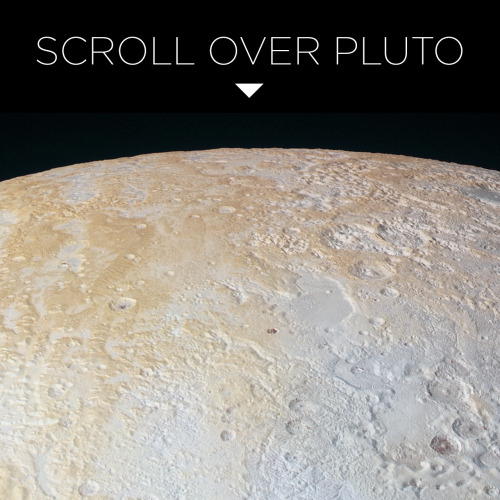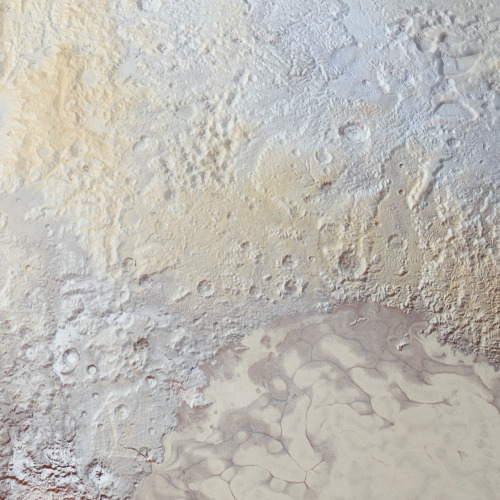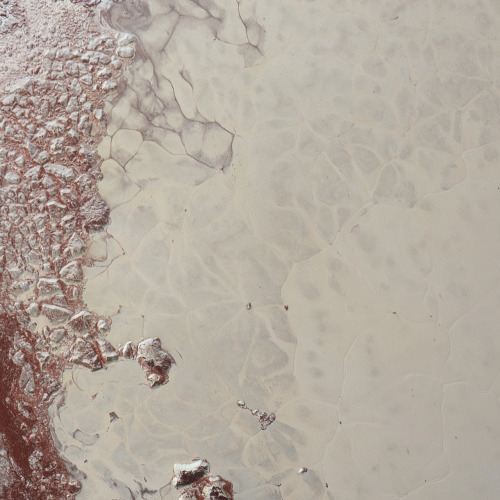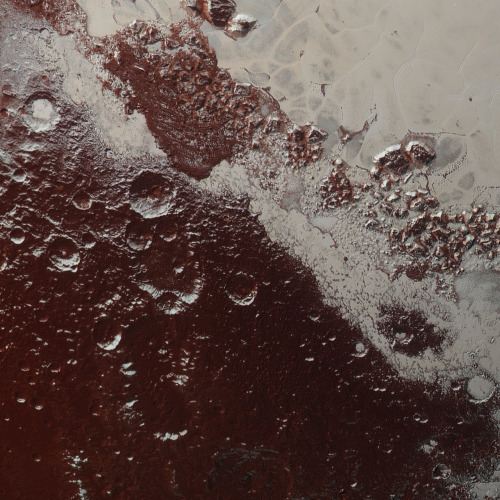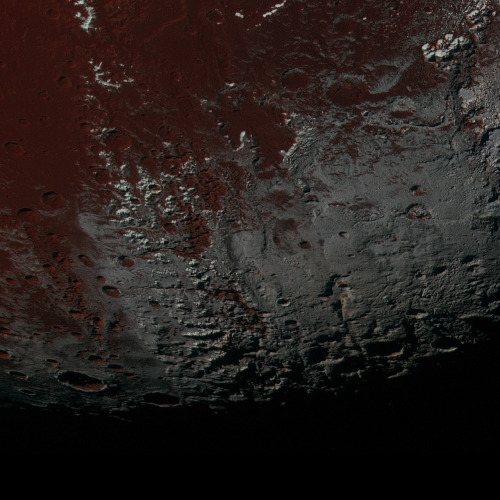My Microphone Just Arrived! Now To Set It Up And Figure Out How The Hell It Works....
My microphone just arrived! Now to set it up and figure out how the hell it works....
More Posts from Fillthevoid-with-space and Others
NASA's Swift Mission Maps a Star's 'Death Spiral' into a Black Hole
NASA - Swift Mission patch. March 20, 2017 Some 290 million years ago, a star much like the sun wandered too close to the central black hole of its galaxy. Intense tides tore the star apart, which produced an eruption of optical, ultraviolet and X-ray light that first reached Earth in 2014. Now, a team of scientists using observations from NASA’s Swift satellite have mapped out how and where these different wavelengths were produced in the event, named ASASSN-14li, as the shattered star’s debris circled the black hole. “We discovered brightness changes in X-rays that occurred about a month after similar changes were observed in visible and UV light,” said Dheeraj Pasham, an astrophysicist at the Massachusetts Institute of Technology (MIT) in Cambridge, Massachusetts, and the lead researcher of the study. “We think this means the optical and UV emission arose far from the black hole, where elliptical streams of orbiting matter crashed into each other.”
Swift Charts a Star’s ‘Death Spiral’ into Black Hole
Video above: This animation illustrates how debris from a tidally disrupted star collides with itself, creating shock waves that emit ultraviolet and optical light far from the black hole. According to Swift observations of ASASSN-14li, these clumps took about a month to fall back to the black hole, where they produced changes in the X-ray emission that correlated with the earlier UV and optical changes. Video Credits: NASA’s Goddard Space Flight Center. Astronomers think ASASSN-14li was produced when a sun-like star wandered too close to a 3-million-solar-mass black hole similar to the one at the center of our own galaxy. For comparison, the event horizon of a black hole like this is about 13 times bigger than the sun, and the accretion disk formed by the disrupted star could extend to more than twice Earth’s distance from the sun. When a star passes too close to a black hole with 10,000 or more times the sun’s mass, tidal forces outstrip the star’s own gravity, converting the star into a stream of debris. Astronomers call this a tidal disruption event. Matter falling toward a black hole collects into a spinning accretion disk, where it becomes compressed and heated before eventually spilling over the black hole’s event horizon, the point beyond which nothing can escape and astronomers cannot observe. Tidal disruption flares carry important information about how this debris initially settles into an accretion disk. Astronomers know the X-ray emission in these flares arises very close to the black hole. But the location of optical and UV light was unclear, even puzzling. In some of the best-studied events, this emission seems to be located much farther than where the black hole’s tides could shatter the star. Additionally, the gas emitting the light seemed to remain at steady temperatures for much longer than expected. ASASSN-14li was discovered Nov. 22, 2014, in images obtained by the All Sky Automated Survey for SuperNovae (ASASSN), which includes robotic telescopes in Hawaii and Chile. Follow-up observations with Swift’s X-ray and Ultraviolet/Optical telescopes began eight days later and continued every few days for the next nine months. The researchers supplemented later Swift observations with optical data from the Las Cumbres Observatory headquartered in Goleta, California.
Image above: This artist’s rendering shows the tidal disruption event named ASASSN-14li, where a star wandering too close to a 3-million-solar-mass black hole was torn apart. The debris gathered into an accretion disk around the black hole. New data from NASA’s Swift satellite show that the initial formation of the disk was shaped by interactions among incoming and outgoing streams of tidal debris. Image Credit: NASA’s Goddard Space Flight Center. In a paper describing the results published March 15 in The Astrophysical Journal Letters, Pasham, Cenko and their colleagues show how interactions among the infalling debris could create the observed optical and UV emission. Tidal debris initially falls toward the black hole but overshoots, arcing back out along elliptical orbits and eventually colliding with the incoming stream. “Returning clumps of debris strike the incoming stream, which results in shock waves that emit visible and ultraviolet light,” said Goddard’s Bradley Cenko, the acting Swift principal investigator and a member of the science team. “As these clumps fall down to the black hole, they also modulate the X-ray emission there.”
Swift spacecraft. Image Credit: NASA
Future observations of other tidal disruption events will be needed to further clarify the origin of optical and ultraviolet light. Goddard manages the Swift mission in collaboration with Pennsylvania State University in University Park, the Los Alamos National Laboratory in New Mexico and Orbital Sciences Corp. in Dulles, Virginia. Other partners include the University of Leicester and Mullard Space Science Laboratory in the United Kingdom, Brera Observatory and the Italian Space Agency in Italy, with additional collaborators in Germany and Japan. Related: Scientists Identify a Black Hole Choking on Stardust (MIT): http://news.mit.edu/2017/black-hole-choking-stardust-0315 ASASSN-14li: Destroyed Star Rains onto Black Hole, Winds Blow it Back: http://chandra.harvard.edu/photo/2015/tidal/ 'Cry’ of a Shredded Star Heralds a New Era for Testing Relativity: https://www.nasa.gov/mission_pages/swift/bursts/shredded-star.html Researchers Detail How a Distant Black Hole Devoured a Star: https://www.nasa.gov/mission_pages/swift/bursts/devoured-star.html All Sky Automated Survey for SuperNovae (ASASSN): http://www.astronomy.ohio-state.edu/~assassin/index.shtml Las Cumbres Observatory: https://lco.global/ NASA’s Swift: http://www.nasa.gov/mission_pages/swift/main/index.html Images (mentioned), Video (mentioned), Text, Credits: NASA’s Goddard Space Flight Center, by Francis Reddy/Karl Hille. Greetings, Orbiter.ch Full article
NASA’s Hybrid Computer Enables Raven’s Autonomous Rendezvous Capability
ISS - International Space Station patch. March 21, 2017 A hybrid computing system developed at NASA’s Goddard Space Flight Center in Greenbelt, Maryland, is the enabling technology behind an ambitious experiment testing a relative navigation and autonomous docking capability known as Raven.
Image above: This panorama of the International Space Station was composed by piecing together images taken by Raven’s Visible Camera. These images were processed by a hybrid computing platform, SpaceCube 2.0. Image Credit: NASA. Developed by the Satellite Servicing Projects Division, or SSPD, the carry-on luggage-sized module was launched February 19 aboard SpaceX’s Dragon spacecraft, along with other experiments deployed outside the International Space Station on an experiment pallet. Raven is testing and maturing visible, infrared and lidar sensors and machine-vision algorithms; the module will bring NASA one step closer to realizing the groundbreaking autopilot capability that can be applied to many NASA missions for decades to come. Since NASA’s pre-Apollo days, the agency has successfully docked spacecraft while they speed through space. However, all operations involved humans who orchestrated the movements from the ground. Raven’s objective is to develop and mature technologies that ultimately will relieve human dependency and give spacecraft the ability to catch up with one another and dock autonomously in real time. “The Raven module is equipped with technology that lays the foundation for a relative navigation system,” said Goddard Director Christopher Scolese. “What some may not fully appreciate is the fact that Raven’s sensors could not do their job if it weren’t for another very effective technology called SpaceCube. The SpaceCube processor is the behind-the-scenes technology that is making this important demonstration possible.” SpaceCube is a reconfigurable, very fast flight computing platform that Goddard technologists first demonstrated during a relative navigation experiment on the Hubble Servicing Mission-4 in 2009. During the Raven experiment, the module’s “sensors serve as the eyes. SpaceCube acts as the brain, analyzing data and telling components what to do,” said Ben Reed, deputy division director of SSPD. The “eyes” and the “brain” together create the autopilot capability. Since its initial development, SpaceCube has evolved into a family of flight computers all distinguished by their computing speed, which is 10 to 100 times faster than the commonly used spaceflight processor — the RAD750. Though the RAD750 is immune to the adverse effects of radiation, it is slow and many generations behind the computing speed of commercial processors. SpaceCube processors achieve their data-crunching prowess because Goddard technologists married radiation-tolerant integrated circuits, which are programmed to execute specific computing jobs simultaneously, with algorithms that detect and fix radiation-induced upsets in collected data. Consequently, these hybrid systems are nearly as reliable as the RAD750, yet orders-of-magnitude faster, capable of executing complex computations once limited to ground-based systems.
Image above: This image shows the Defense Department’s experiment pallet, STP-H5, hanging at the end of Canada’s robotic arm during installation on the outside of the International Space Station. Image Credit: NASA. During its two-year stay on the space station, Raven will sense incoming and outgoing visiting space station spacecraft, feeding the data it “sees” to SpaceCube 2.0, one in the family of SpaceCube products. SpaceCube then runs a set of pose algorithms, or a set of instructions, to gauge the relative distance between Raven and the spacecraft it is tracking. Then, based on these calculations, SpaceCube 2.0 autonomously sends commands that swivel the Raven module on its gimbal or pointing system to keep the sensors trained on the vehicle, while continuing to track it. While all this is transpiring, NASA operators on the ground monitor Raven’s technologies, paying close attention to how they function as a system and making necessary adjustments to increase Raven’s tracking abilities. “Tracking spacecraft with this system is only possible because we have SpaceCube,” said SSPD Avionics Technology Lead and SpaceCube Lead Engineer David Petrick, who has won prestigious awards for his work on the processor. “This type of operation requires fast computing.” Raven’s foundational technologies will be applied to future missions. For example, Restore-L, which also will use SpaceCube 2.0, will rendezvous with, grasp, refuel and relocate Landsat 7 when it launches in 2020. SpaceCube 2.0, however, isn’t the only processor now at work on the space station’s external experiment pallet sponsored by the Department of Defense’s Space Technology Program. SpaceCube 1.0 is being used as the communication interface between the space station’s data services and multiple experiments on the pallet. In addition, a miniaturized version of SpaceCube 2.0 — the SpaceCube Mini — is operating two NASA and U.S. Defense Department experiments. NASA also is testing two other miniature computers, developed with the University of Florida. These models are mostly equipped with commercial parts. For other technology news, go to https://gsfctechnology.gsfc.nasa.gov/newsletter/Current.pdf Related links: Raven: https://sspd.gsfc.nasa.gov/Raven.html SpaceCube: https://spacecube.gsfc.nasa.gov/ Space Station Research and Technology: https://www.nasa.gov/mission_pages/station/research/index.html International Space Station (ISS): https://www.nasa.gov/mission_pages/station/main/index.html Images (mentioned), Text, Credits: NASA Goddard Space Flight Center/Lori Keesey/Lynn Jenner. Greetings, Orbiter.ch Full article
It made it!

Thank you SpaceX. You just gave us the keys to our dreams. So much is now possible…
(Image credit: SpaceX SES-10 stream)
Does Mars Have Rings? Not Right Now, But Maybe One Day
NASA - Mars Science Laboratory (MSL) patch. March 20, 2017 As children, we learned about our solar system’s planets by certain characteristics – Jupiter is the largest, Saturn has rings, Mercury is closest to the sun. Mars is red, but it’s possible that one of our closest neighbors also had rings at one point and may have them again someday. That’s the theory put forth by NASA-funded scientists at Purdue University, Lafayette, Indiana, whose findings were published in the journal Nature Geoscience. David Minton and Andrew Hesselbrock developed a model that suggests that debris that was pushed into space from an asteroid or other body slamming into Mars around 4.3 billion years ago alternates between becoming a planetary ring and clumping together to form a moon. One theory suggests that Mars’ large North Polar Basin or Borealis Basin – which covers about 40 percent of the planet in its northern hemisphere – was created by that impact, sending debris into space. “That large impact would have blasted enough material off the surface of Mars to form a ring,” Hesselbrock said. Hesselbrock and Minton’s model suggests that as the ring formed, and the debris slowly moved away from the Red Planet and spread out, it began to clump and eventually formed a moon. Over time, Mars’ gravitational pull would have pulled that moon toward the planet until it reached the Roche limit, the distance within which a planet’s tidal forces will break apart a celestial body that is held together only by gravity.
Image above: The image from NASA’s Curiosity Mars rover shows one of Mars’ two moons, Phobos, passing directly in front of the other, Deimos, in 2013. New research suggests the moons consolidated long ago from dust rings around the planet and, in the distant future, may disintegrate into new rings. Image Credits: NASA/JPL-Caltech/Malin Space Science Systems/Texas A&M Univ. Phobos, one of Mars’ moons, is getting closer to the planet. According to the model, Phobos will break apart upon reaching the Roche limit, and become a set of rings in roughly 70 million years. Depending on where the Roche limit is, Minton and Hesselbrock believe this cycle may have repeated between three and seven times over billions of years. Each time a moon broke apart and reformed from the resulting ring, its successor moon would be five times smaller than the last, according to the model, and debris would have rained down on the planet, possibly explaining enigmatic sedimentary deposits found near Mars’ equator. “You could have had kilometer-thick piles of moon sediment raining down on Mars in the early parts of the planet’s history, and there are enigmatic sedimentary deposits on Mars with no explanation as to how they got there,” Minton said. “And now it’s possible to study that material.” Other theories suggest that the impact with Mars that created the North Polar Basin led to the formation of Phobos 4.3 billion years ago, but Minton said it’s unlikely the moon could have lasted all that time. Also, Phobos would have had to form far from Mars and would have had to cross through the resonance of Deimos, the outer of Mars’ two moons. Resonance occurs when two moons exert gravitational influence on each other in a repeated periodic basis, as major moons of Jupiter do. By passing through its resonance, Phobos would have altered Deimos’ orbit. But Deimos’ orbit is within one degree of Mars’ equator, suggesting Phobos has had no effect on Deimos. “Not much has happened to Deimos’ orbit since it formed,” Minton said. “Phobos passing through these resonances would have changed that.” “This research highlights even more ways that major impacts can affect a planetary body,” said Richard Zurek of NASA’s Jet Propulsion Laboratory, Pasadena, California. He is the project scientist for NASA’s Mars Reconnaissance Orbiter, whose gravity mapping provided support for the hypothesis that the northern lowlands were formed by a massive impact. Minton and Hesselbrock will now focus their work on either the dynamics of the first set of rings that formed or the materials that have rained down on Mars from disintegration of moons. Curiosity is part of NASA’s ongoing Mars research and preparation for a human mission to Mars in the 2030s. Caltech manages JPL, and JPL manages the Curiosity mission for NASA’s Science Mission Directorate in Washington. For more about Curiosity, visit: http://www.nasa.gov/msl and http://mars.jpl.nasa.gov/msl/ For more information about NASA missions investigating Mars, visit: https://mars.nasa.gov/ Image (mentioned), Text, Credits: NASA/Laurie Cantillo/Dwayne Brown/JPL/Guy Webster/Purdue University/Steve Tally/Emil Venere/Writer: Brian Wallheimer. Best regards, Orbiter.ch Full article
This is an article from last year, but still very exciting news! I wonder how far it’s progressed since?

The venerable Voyager 1 spacecraft. Still impressing after all these years.

No matter where you hang your stockings, I wish you a very Merry Christmas!
The Yutu rover suffered a mysterious “abnormality” over the weekend. And the robot’s microblogged death note may make you cry.
oh gosh!

Hubble Showcases a Remarkable Galactic Hybrid : UGC 12591s classification straddles somewhere between a lenticular and a spiral galaxy. It lies just under 400 million light-years from us in the PiscesPerseus Supercluster.
js
-
 letsfollowthesedays reblogged this · 8 years ago
letsfollowthesedays reblogged this · 8 years ago -
 fillthevoid-with-space reblogged this · 8 years ago
fillthevoid-with-space reblogged this · 8 years ago
A podcast project to fill the space in my heart and my time that used to be filled with academic research. In 2018, that space gets filled with... MORE SPACE! Cheerfully researched, painstakingly edited, informal as hell, definitely worth everyone's time.
243 posts
